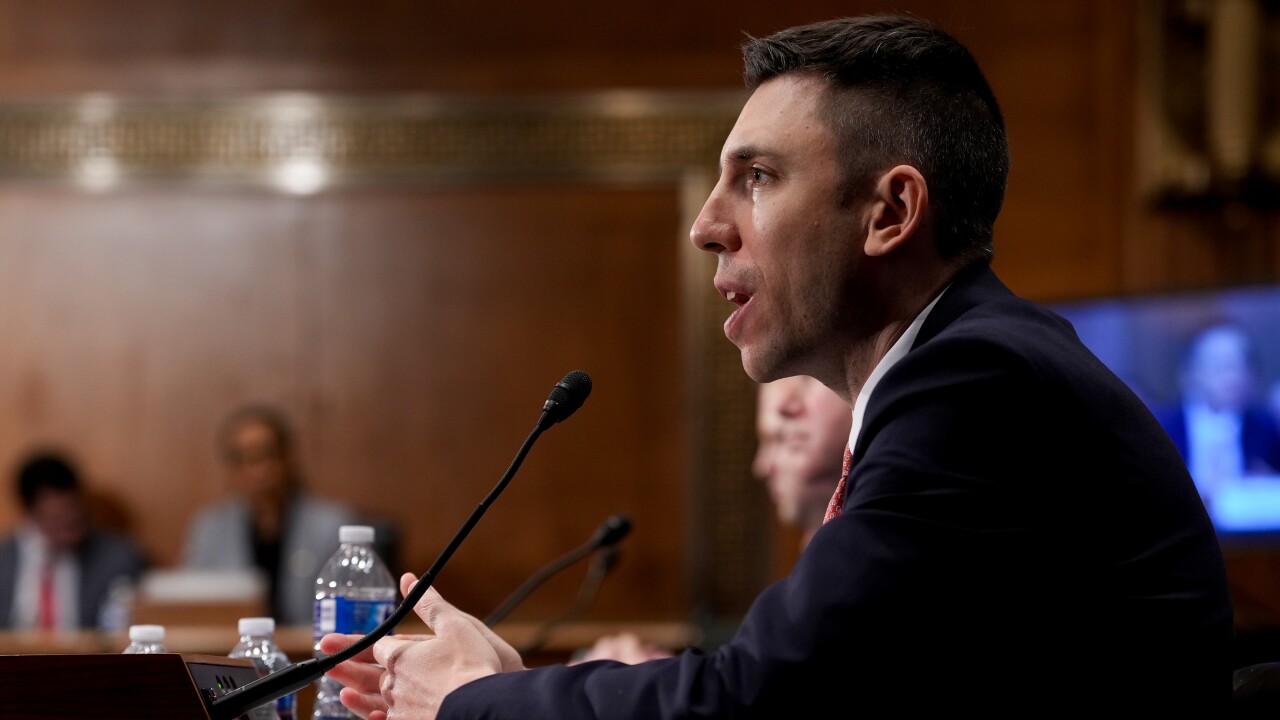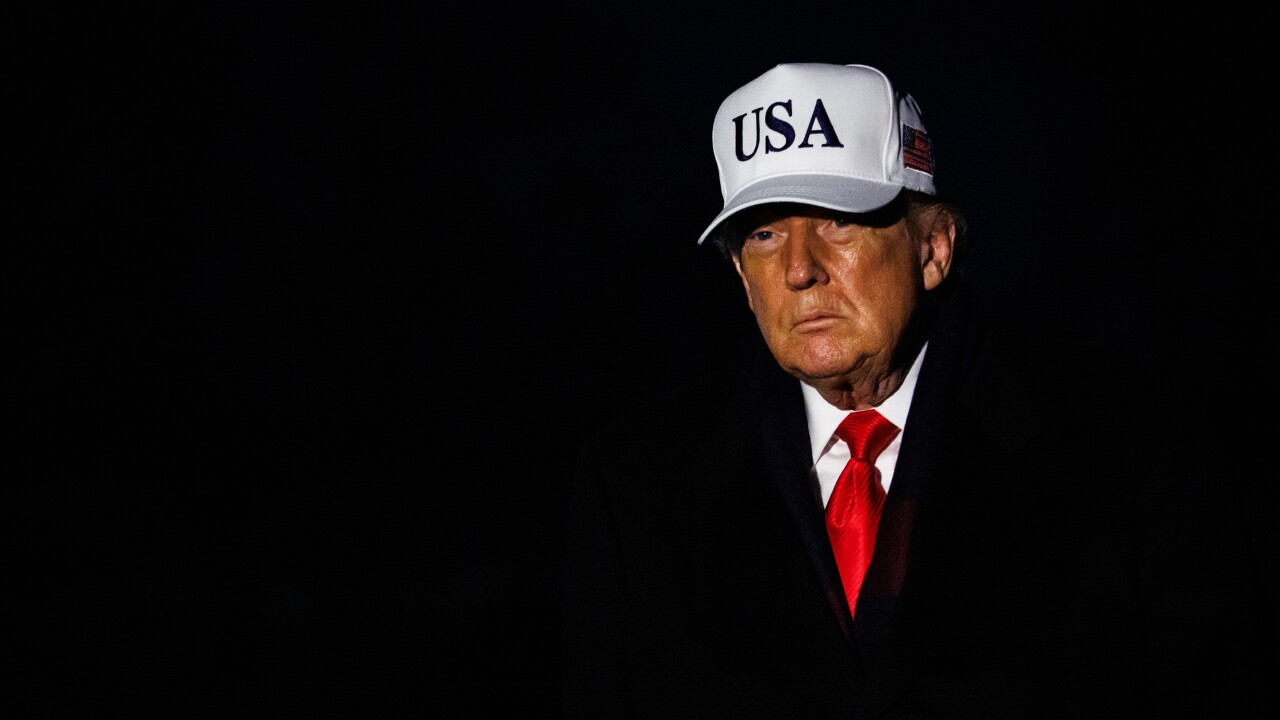In 1973, the Princeton economist Burton Malkiel leveled one of the most enduring barbs in history against Wall Street money managers — one that still stings today.
“A blindfolded monkey throwing darts at a newspaper’s financial pages could select a portfolio that would do just as well as one carefully selected by experts,” Malkiel famously wrote in the investment classic “A Random Walk Down Wall Street.”
For years, index funds — a basket of stocks designed to mimic the stock market — have been the de facto stand-in for the blindfolded monkey throwing darts.
Once considered a radical concept in the 1960s and 1970s, index funds are now the biggest shareholders in almost every major U.S. corporation.
Index funds have created a revolution by enabling individual investors for the past 50 years to track the overall market or any financial index, without paying excessive fees to money managers. Today, an estimated $26 trillion is tied to financial benchmarks.
How index funds grew to become the behemoths of the financial industry is told in “Trillions: How a Band of Wall Street Renegades Invented the Index Fund and Changed Finance Forever,” by Robin Wigglesworth, the global finance correspondent at the Financial Times.
Wigglesworth traces the germ of the idea for index funds to an obscure French mathematician, Louis Bachelier, whose thesis in 1900 examined how financial securities appear to move in random, unpredictable ways.

He takes the reader into the rarefied halls of the University of Chicago, where a group of economists led by Eugene F. Fama laid the economic groundwork for the birth of passive investing.
Fama, who would become a Nobel laureate for his “efficient markets” theory, sought to explain why markets are so hard to beat. He debunked claims that future stock moves could be predicted based on past performance.
Fama and his proteges helped ignite what Wigglesworth calls “an academic rebellion against the investment industry,” by shining a spotlight on the excessive fees charged by Wall Street stock-pickers that also led to a revolution in the world of investing.
That index funds were able to gain traction in the early 1970s is an underappreciated feat, given that computers at the time were the size of refrigerators and took hours to run noisily using Fortran, SunMicrosystems or Datatron.
Active fund managers saw them as a threat to the fee-driven money management industry, and scoffed at the upstart funds, deriding them as “cheap,” “average” and even “un-American.”
“Trillions” is an engaging and informative read about the early adopters of a disruptive new technology.
Some of the financial quotes are priceless and ring true to today’s latest flavor-of-the-month products.
“It became clear that many investors that were buying a lot of these new financial products didn’t really understand them,” says Ralph Schlosstein, the co-founder, with Larry Fink, and former president of BlackRock Financial Management.
Wells Fargo became a laboratory for the use of computers in investment work, largely because Wells Fargo Chairman Ransom Cook wanted to see if index funds could predict future stock market prices from past trading volumes and patterns. Wigglesworth calls Wells “the spiritual birthplace of the index fund,” in part because of the dogged work of John “Mac” McQuown, who would go on to launch the first passive investment fund, in 1971.
Wigglesworth describes the competitive race to create the first passive index fund among a small group of iconoclasts including Rex Sinquefield, a Fama protege who made the radical proposal to start a fund at American National Bank of Chicago that would mimic the Standard & Poor’s 500. Sinquefield would later go on to found Dimensional Fund Advisors with co-founder David Booth.
No story about index funds would be complete without John C. Bogle, the founder of the index fund giant Vanguard. Though Bogle is widely credited with creating the first index fund, he was not the first — nor the most successful — disciple of indexing.
Malkiel, who became a longtime board member at Vanguard, went on to chair the American Stock Exchange’s new-products division, which invented the exchange-traded fund, the modern-day descendant of index funds. Today he is the chief investment officer of the robo advisor Wealthfront, which was recently bought by the Swiss giant UBS.
“Trillions” is packed with titillating anecdotes, lively quotes and other insightful takeaways, chief among them the falling-out between Bogle and his lieutenant and successor Jack Brennan.
But there are warning signs on the horizon. The advent of ETFs has blurred the line between active and passive investing, some argue. Meanwhile, the proliferation of index funds has led to the wildly lucrative business of creating financial benchmarks.
Wigglesworth also sees a possible backlash ahead. Fink, the mortgage bond trader who created BlackRock with a $5 million loan and built it into the world’s biggest money manager, with $23 billion of assets, has warned corporate boards of the need to confront climate change.
That has led some critics to claim that index funds may try to exert even more influence. John Coates, a Harvard Law professor, suggested in the book that the economic power wielded by the largest index fund managers is far more concentrated than most people realize.
“The effect of indexation will be to turn the concept of ‘passive’ investing on its head and produce the greatest concentration of economic control in our lifetimes,” Coates said. “The prospect of twelve people even potentially controlling most of the economy poses a legitimacy and accountability issue of the first order."





